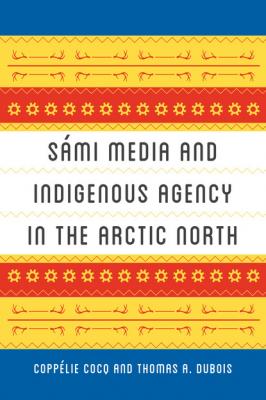Sámi Media and Indigenous Agency in the Arctic North. Thomas A. DuBois
Историческая литература. New Directions in Scandinavian StudiesSámi Media and Indigenous Agency in the Arctic North
Год выпуска 0
isbn 9780295746616
Автор произведения Thomas A. DuBois
Серия New Directions in Scandinavian Studies
Издательство Ingram
Digital media–GIFs, films, TED Talks, tweets, and more–have become integral to daily life and, unsurprisingly, to Indigenous people’s strategies for addressing the historical and ongoing effects of colonization. In Sámi Media and Indigenous Agency in the Arctic North , Thomas DuBois and Coppélie Cocq examine how Sámi people of Norway, Finland, and Sweden use media to advance a social, cultural, and political agenda anchored in notions of cultural continuity and self-determination. Beginning in the 1970s, Sámi have used Sámi-language media—including commercially produced musical recordings, feature and documentary films, books of literature and poetry, and magazines—to communicate a sense of identity both within the Sámi community and within broader Nordic and international arenas.In more contemporary contexts—from YouTube music videos that combine rock and joik (a traditional Sámi musical genre) to Twitter hashtags that publicize protests against mining projects in Sámi lands—Sámi activists, artists, and cultural workers have used the media to undo layers of ignorance surrounding Sámi livelihoods and rights to self-determination. Downloadable songs, music festivals, films, videos, social media posts, images, and tweets are just some of the diverse media through which Sámi activists transform how Nordic majority populations view and understand Sámi minority communities and, more globally, how modern states regard and treat Indigenous populations.
